Acer Predator Helios 300 (2018) Review
Acer Predator Helios 300 (2018) Review
What is the Acer Predator Helios 300? The Acer Predator Helios 300 is a mid-range gaming laptop with a 144Hz IPS display that should provide good image quality and great gaming performance. You can pickup the laptop with a range of 7000-series and 8000-series Intel processors and choose from either an Nvidia GeForce GTX 1050 […]
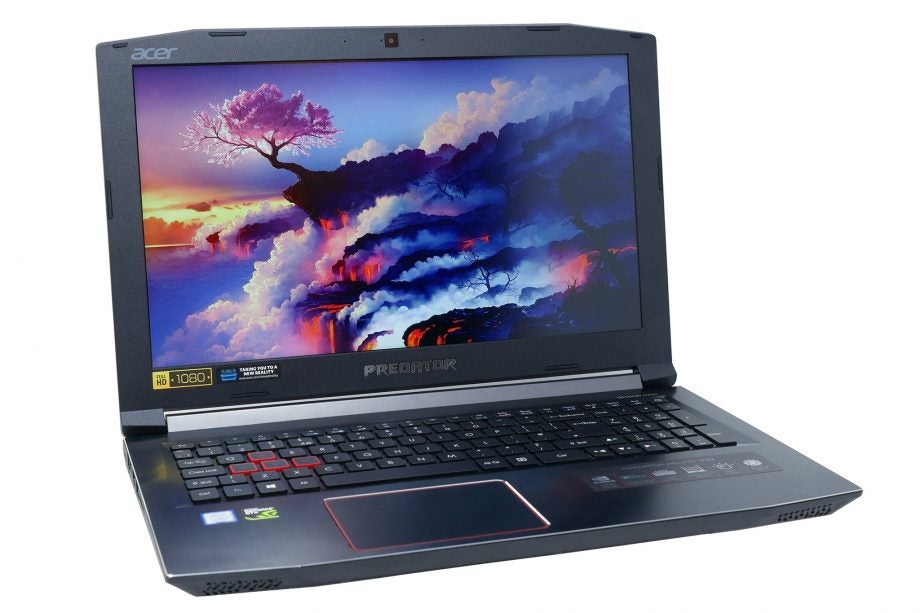
Verdict
The Acer Helios 300 is a decent option for those seeking a mid-range gaming laptop with a high refresh rate screen.
Pros
- Great-quality screen
- Good gaming performance
- Reasonable value
Cons
- Slow SSD
- Noisy cooling fans
- Weak speakers
Key Specifications
- Review Price: £1200
- 15.6in 144Hz IPS display
- Intel Core i7-8750H
- 16GB DDR4 RAM
- Nvidia GeForce GTX 1060
- 256GB SSD, 1TB HDD
What is the Acer Predator Helios 300?
The Acer Predator Helios 300 is a mid-range gaming laptop with a 144Hz IPS display that should provide good image quality and great gaming performance.
You can pickup the laptop with a range of 7000-series and 8000-series Intel processors and choose from either an Nvidia GeForce GTX 1050 Ti or GTX 1060. It’s available with a number of RAM and storage options too.
The model being reviewed here includes an Intel Core i7-8750H, 16GB or RAM, a 256GB SSD, 1TB HDD and GTX 1060 – all for just £1199. It’s a decent spec list for the price, so let’s dig a little deeper to see if the Helios 300 delivers the goods elsewhere.
Acer Predator Helios 300 – Design and features
The Helios 300’s design features several hallmarks of a gaming machine. You have a few red highlights, an aggressive-looking Predator logo, and an angular form overall.
However, as such machines go, it isn’t too outlandish. Much of the laptop is finished in either matte black plastic or a brushed black anodised aluminium that looks reasonably smart. Slap a sticker over the Predator logo on the lid and it could just about pass for a more business-like machine.
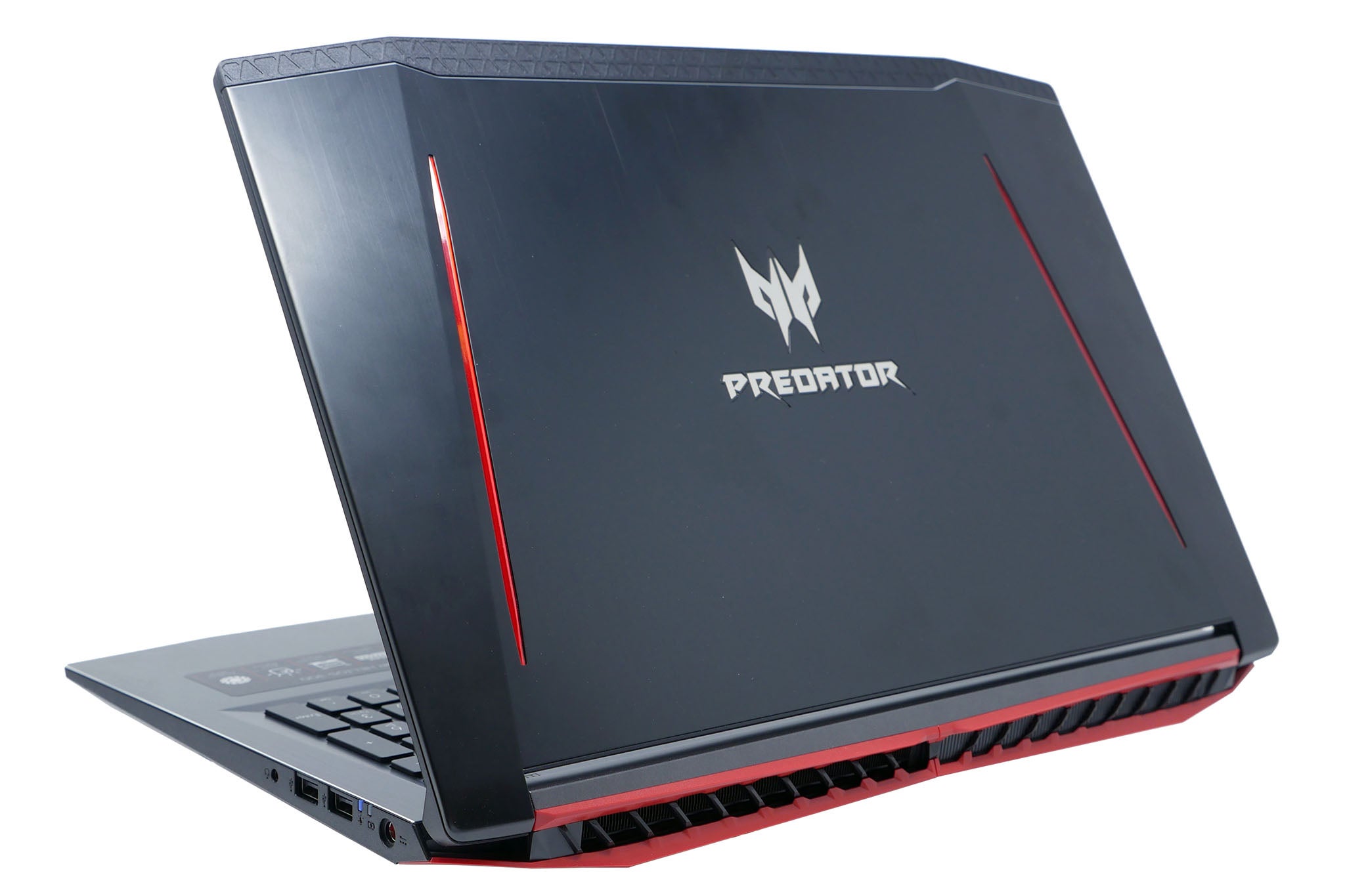
Build quality is decent enough, too. You’re a long way from the all-aluminium, unibody designs of a MacBook Pro or Razer Blade 15, but there’s a reasonable sturdiness overall, with not much flex on display in the main panels .
This is far from the slimmest or lightest 15.6in laptop there’s ever been. The bezels round the screen are noticeably wide, making for a hefty footprint of 390 x 266mm. The Helios 300 is also relatively chunky, at 26.8mm thick and weighing 2.7kg – 500g or so more than the lightest 15.6in gaming laptops. That said, compared to other budget gaming laptops, these specs are typical.
One of the benefits of this larger footprint is added room for the machine’s main features. Next to the keyboard you’ll find a numerical pad, and inside there’s also space for a 2.5-inch drive.
Related: Best PC games
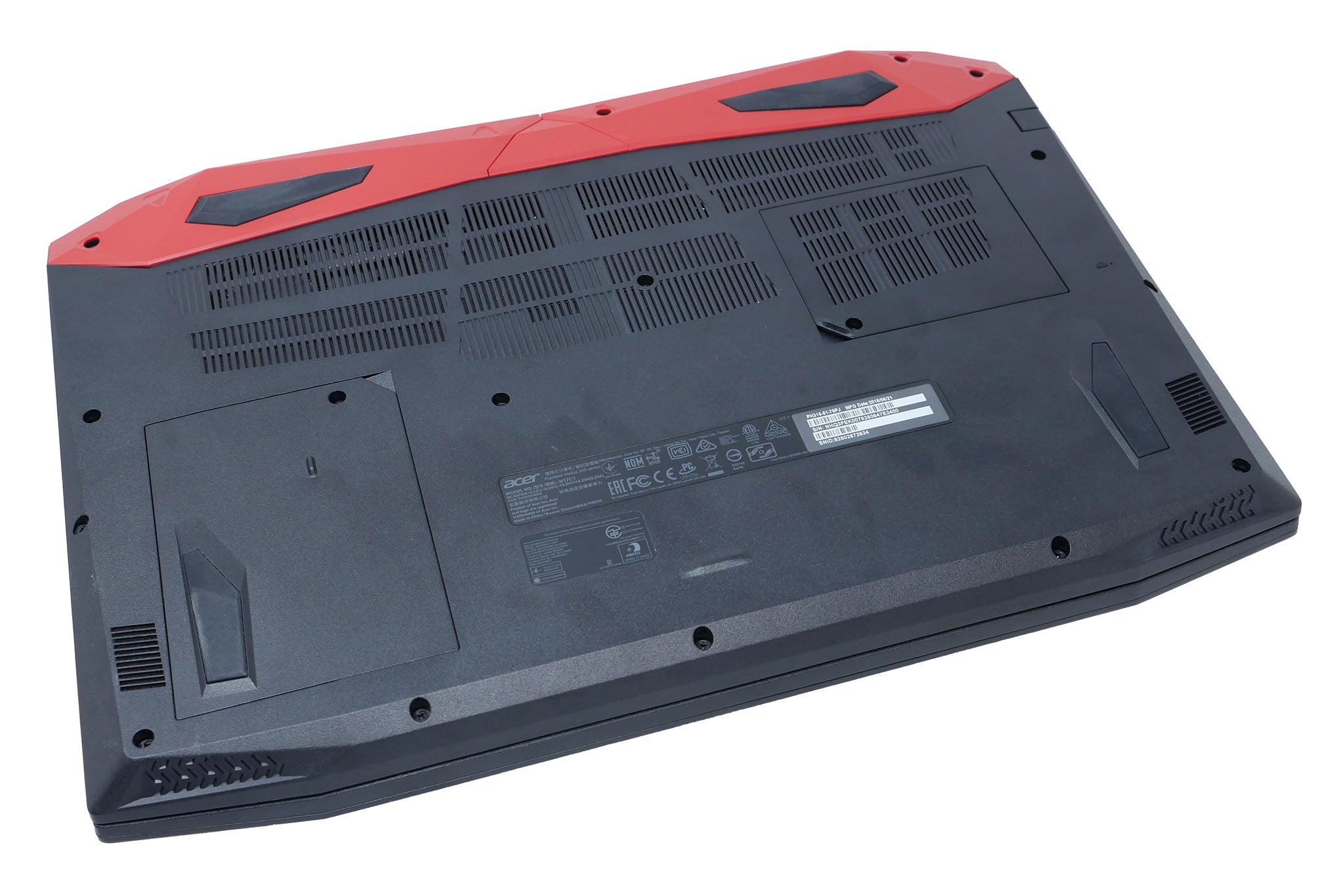
By default the Helios 300 comes fitted with a 1TB hard drive, but you could easily upgrade to a larger capacity disk or even a 2.5in SSD. You can access the drive through a panel on the underside of the laptop. A second panel provides access to the two memory slots. This particular model includes 16GB of RAM, with both slots occupied, so it’s unlikely you’ll want to upgrade. However, the cheaper models with only 8GB might benefit.
Also on the underside of the machine are a number of ventilation grilles, which should mean that even with the Helios 300 sat on your lap, it’s unlikely that you’ll be blocking all airflow. Alongside these intake grilles, hot air is vented out of the rear of the Helios 300.
The slightly clunky arrangement results in half the rear being a grille, with the other half a fake grille, but at a glance you’ll hardly notice it. Note that the Helios 300’s pair of speakers fire downwards through the bottom grilles.
Round the sides of the laptop you’ll find plenty of connectivity options, which include a Gigabit Ethernet port, Type-C USB 3.1, HDMI, USB A 3.0 and SD card reader on the left edge. On the right is a headphone/microphone jack, two USB-A 2.0 ports and the power input.
As you’d expect of a gaming laptop, the Helios 300 requires a fairly sizeable power brick.
Related: Best multiplayer games
Acer Predator Helios 300 – Keyboard and trackpad
The Helios 300’s keyboard is decent. It offers a proper UK layout, with all keys clearly labelled and minimal bunching.
The action of the keys is good, too. They return a nice, defined step as the switches actuate, so it’s easy to determine when a key has been pressed. The action isn’t too stiff, feeling even across most of the keyboard. Note, too, the keyboard doesn’t flex annoyingly at its centre – a common problem on some cheaper laptops.
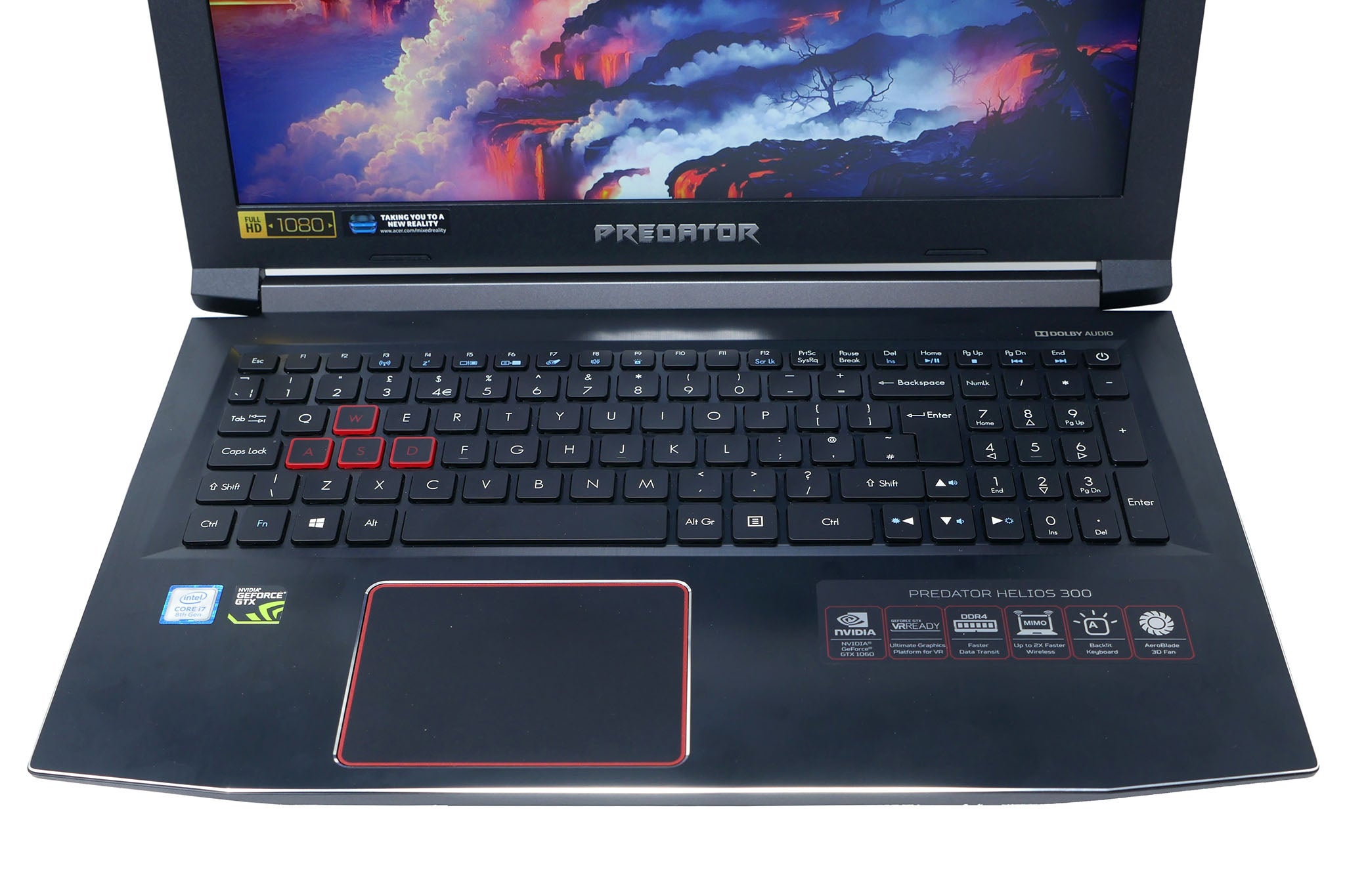
The keys are backlit in red – no RGB here – so typing in the dark won’t be a problem. It’s a shame the brightness can’t be altered, though.
As for the trackpad, it’s okay. It’s a little on the small side by modern standards, and the surface isn’t the smoothest. Nevertheless, it tracks reasonably well and offers an even, responsive click action. It’s perfectly usable.
When it comes to gaming, the keyboard is absolutely fine, but you’ll be wanting to use a proper mouse instead of the trackpad.
Related: Best gaming mice
Acer Predator Helios 300 – Display
The standout feature of this laptop is its screen. All too often, gaming laptop screens are compromised: they’re either stuck at a low refresh rate, use a low-quality LCD panel or have too low (or too high) a resolution. The Helios 300’s display offers the perfect balance.
The 1080p resolution is ample for a display of this size. Higher resolutions can be useful for some applications – for video editing, for example – but for day-to-day use, 1080p is fine. Likewise, a super-high resolution for gaming is nice to have, but for much of the time, 1080p on a screen of this size will look decent and sharp.
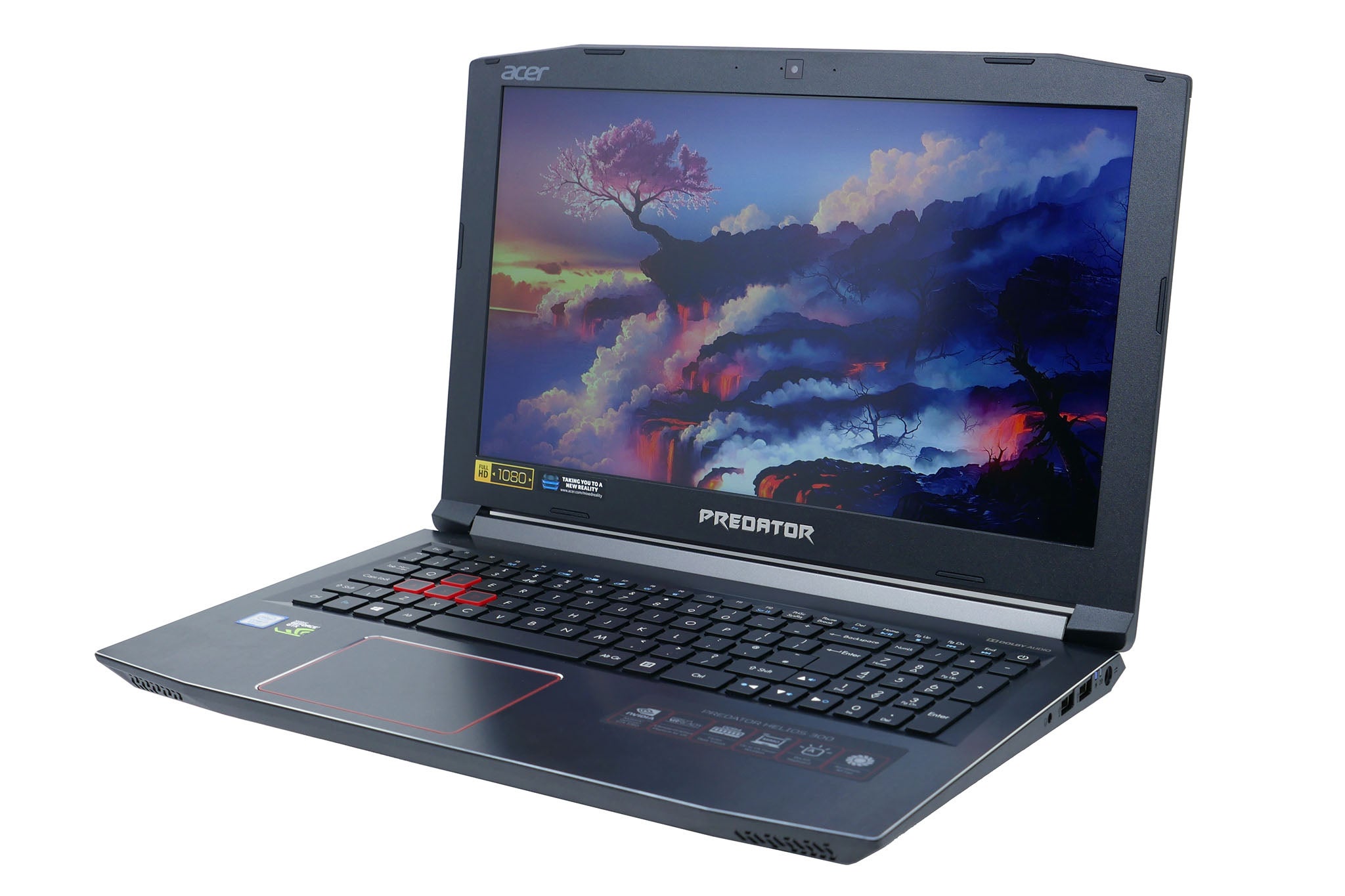
You also get a 144Hz refresh rate here, so games run smoothly – so you’ll be able to game competitively. You do miss out on G-Sync, which is included in the likes of the HP Omen 15, but it’s a minor downside.
Finally of note with regards to the screen, the LCD panel here is of the IPS variety. As such it offers far better viewing angles and colour reproduction than cheaper TN types displays. The former is all the more important on a laptop, compared to a desktop monitor, since you’re more likely to be viewing it from all sorts of awkward angles.
Not only is the Helios 300’s screen an IPS panel, it’s a decent quality one too. It can hit a reasonable brightness of 324 nits, it provides a deep contrast level of 1171:1, and its sRGB colour coverage is a decent 84%. Spend a little more money and of course you’ll get an even better display – but, by and large, the one here is more than good enough.
Note, however, that really serious gamers may want to seek out a laptop with a 1ms, TN-type LCD panel for the ultimate in responsiveness. You’ll compromise on image quality – and they’re not all that common these days – but they’re best for gaming.
Acer Predator Helios 300 – Performance
The spec sheet of this laptop suggests a well-balanced machine that should be able to handle pretty much anything you throw at it – and on the whole, this is the case.
Fire up the Helios 300 and it immediately feels nippy thanks to the combination of its intel Core i7-8750H processor, 16GB of RAM and 256GB SSD. Put it to task on some heftier workloads and it will remain calm under pressure in this instance too.
In our benchmarks, the new six-core Intel processor showed just what it can do, with a Geekbench 4 score that far exceeds older quad- and dual-core laptops and even outpaces other laptops that use the same processor. This would suggest Acer’s cooling solution does a better job than some others, allowing the CPU to run at a faster clock speed for longer.
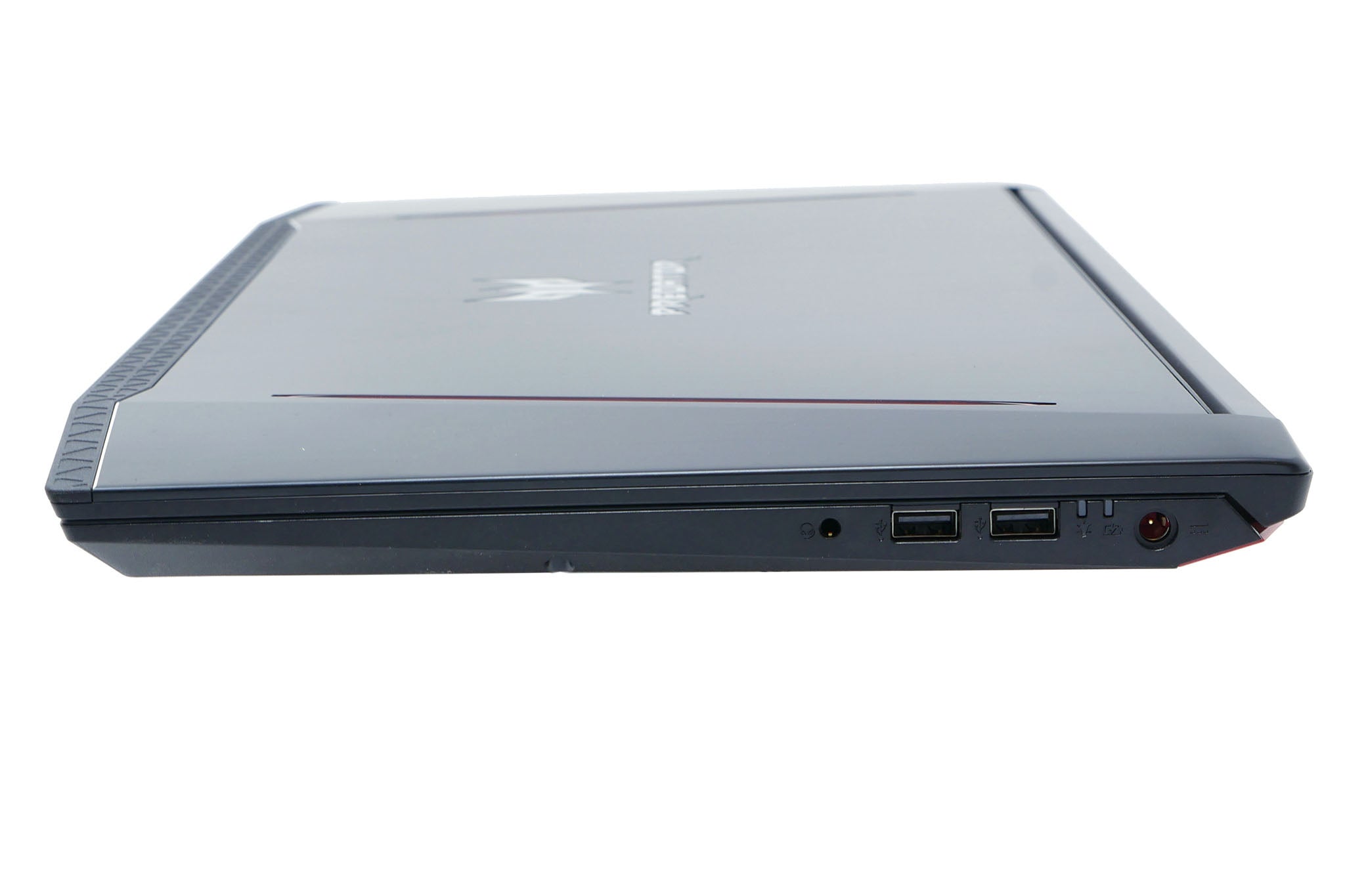
Testing the speed of the storage and things aren’t quite so impressive. While the SSD is fast enough to keep boot-up and game-loading times reasonably nippy, this is far from the fastest SSD around.
Similarly, the 1TB hard drive is very slow, although there isn’t really such a thing as a fast 2.5in hard drive these days. If you want a speed upgrade for that drive then you’ll want to opt for another SSD – you can pickup a 500GB unit that will actually be faster than the preinstalled SSD here for well under £100.
When it comes to gaming, the GTX 1060 at the heart of this laptop does a good job of getting you close to those 144fps when gaming at 1080p. Crank up the detail settings, as we did in our benchmarks, and it will struggle a little in the latest games. Nevertheless, it will still easily max out the refresh rate of the screen in titles such as Fortnite, Counter-Strike and Quake Champions, if you turn down the settings a little.
Inevitably, all that graphical and CPU effort results in plenty of heat, which the Helios 300 exhausts well. However, it’s loud while doing it. Noise levels aren’t much higher than those produced by other similar gaming laptops – but, suffice to say, you wouldn’t want to game on the quiet carriage of a train with the Helios 300.
Thankfully, in general desktop use the noice levels of the laptop didn’t seem to ramp up too much – or to too annoying a level – so day to day use shouldn’t see you disturbed.
Acer Predator Helios 300 – Battery life
As a gaming laptop, it should come as no surprise that the Helios 300’s battery life isn’t exactly its strongest feature. In the Powermark benchmark it lasted just 3hrs 45mins. That’s par for the course for a gaming machine; more portable laptops will last three times longer.
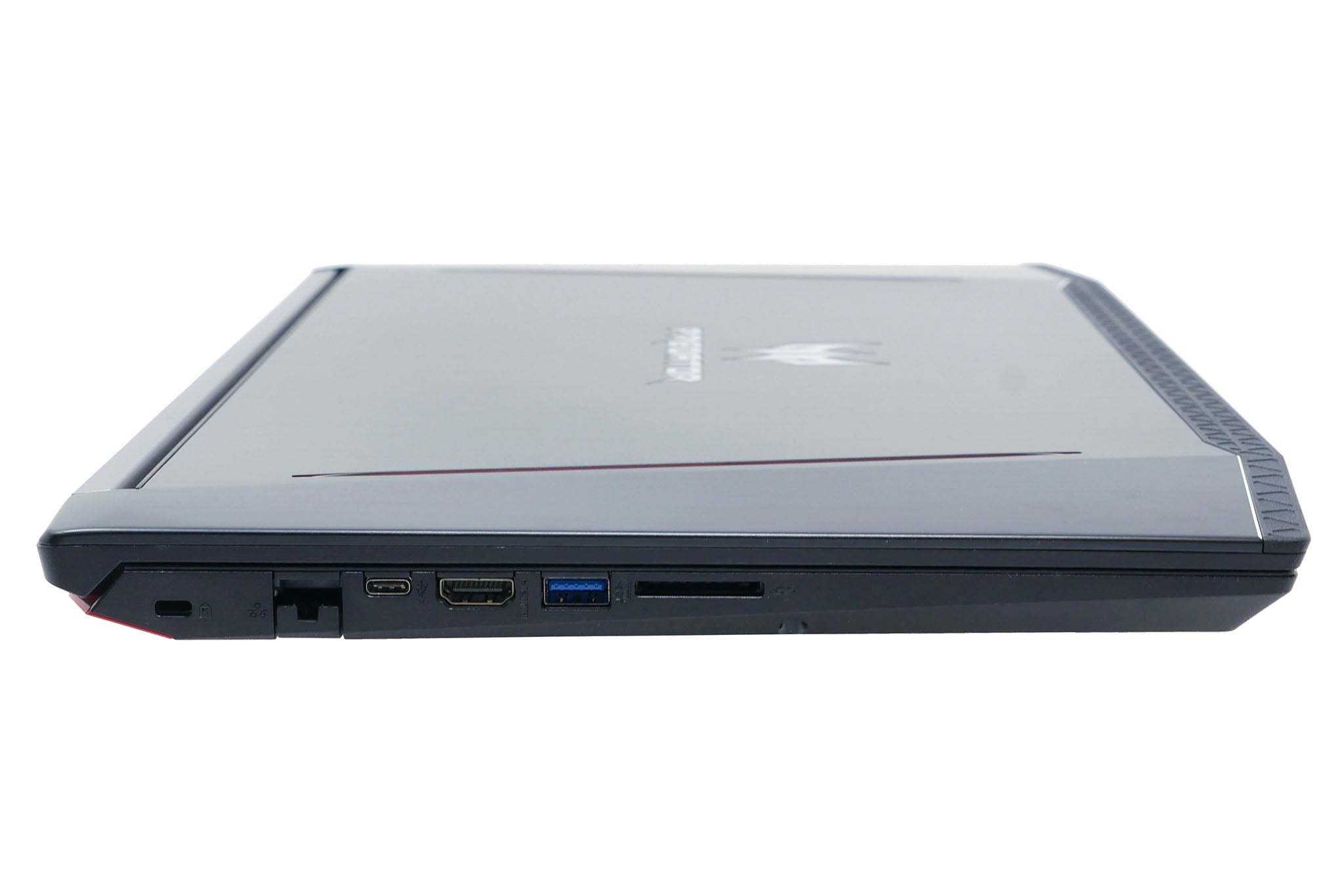
We ran the benchmark with the screen set to 150 nits brightness (about 40%), so you might be able to squeeze a few extra minutes out of the Helios with brightness set to minimum. In addition, a tweak of Windows’ other power options will help out as well. However, it’s unlikely you’ll get much more than half an hour or so by doing this.
Meanwhile, if you try to game on the battery then you’ll be looking at less than two hours before it runs out of juice – again, pretty typical for a gaming laptop.
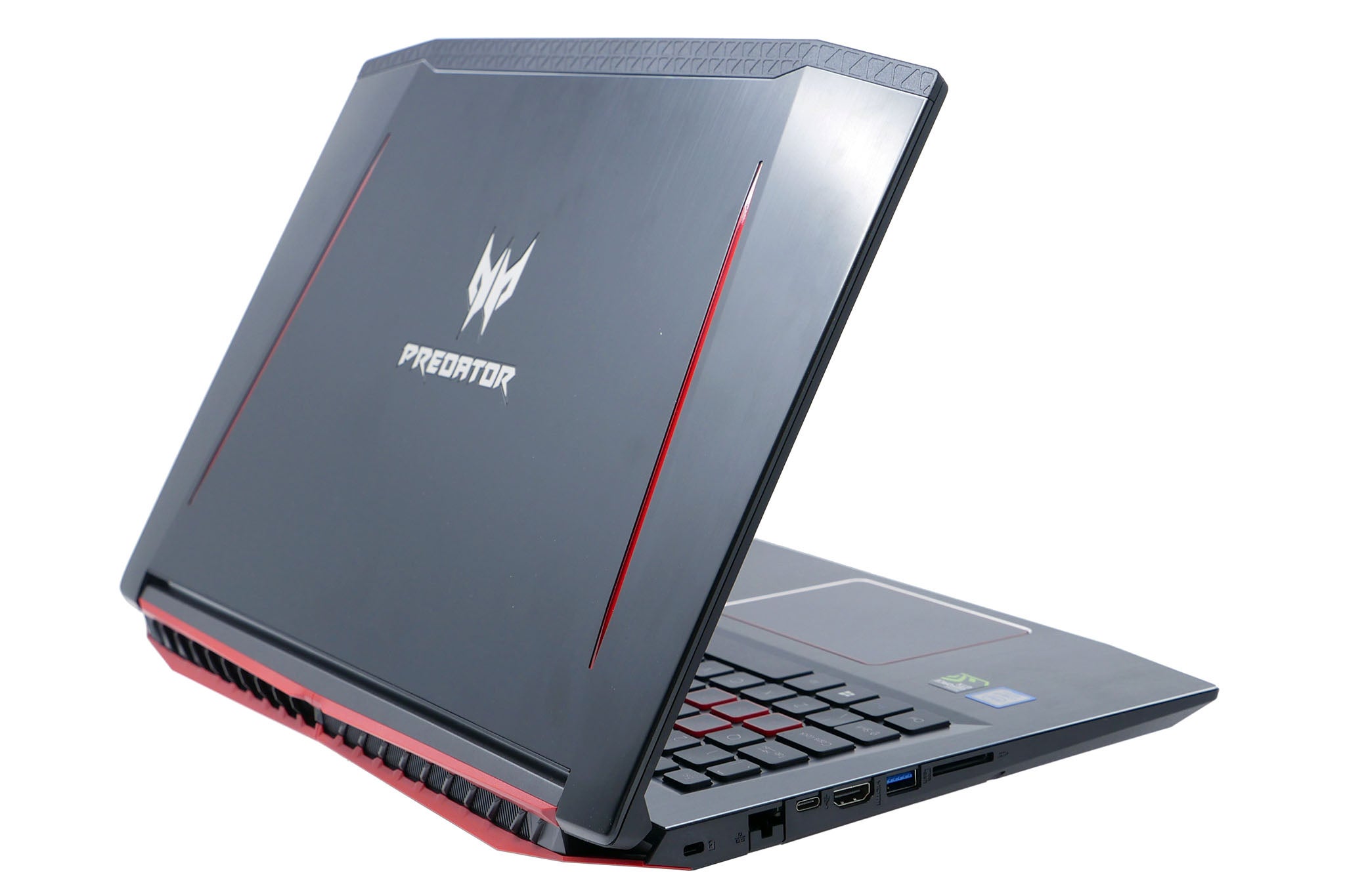
Why buy the Acer Predator Helios 300?
The Helios 300 offers a great balance of features and performance for a reasonable price. If you have £1200 to spend on a laptop, it’s a good option.
Its most compelling feature is its great-quality 144Hz IPS screen, which is good for both gaming and all other laptop duties. Combined with solid gaming performance from the GTX 1060 graphics card and Intel 8750H processor, and you’ve got a machine that really delivers the goods for gaming.
Passable battery life, a decent keyboard and trackpad, and plenty of connectivity all add to a positive overall impression.
That said, there are a few alternatives to consider. The HP Omen 15 has a slightly smarter-looking chassis with narrower bezels surrounding the screen, making for a smaller footprint overall. It also includes G-Sync to eliminate image-tear and stutter. It costs just £50 more than the Helios 300 for essentially the same spec (8GB of RAM and a 128GB SSD).
Spend an extra £300 and you could pick up the Razer Blade – which, again, offers largely the same spec but with an even better screen, much higher overall build quality and a more compact design.
Then again, the cheaper configuration of the Helios 300 – with a GTX 1050 Ti, Intel 8300H, 8GB of RAM and 128GB SSD – costs just £1000 and still includes that all-important 144Hz screen, making that model a tempting option too.
Verdict
The Acer Helios 300 is a decent option for those seeking a mid-range gaming laptop with a high refresh rate screen.
How we test laptops
Unlike other sites, we test every laptop we review thoroughly over an extended period of time. We use industry standard tests to compare features properly. We’ll always tell you what we find. We never, ever, accept money to review a product.

